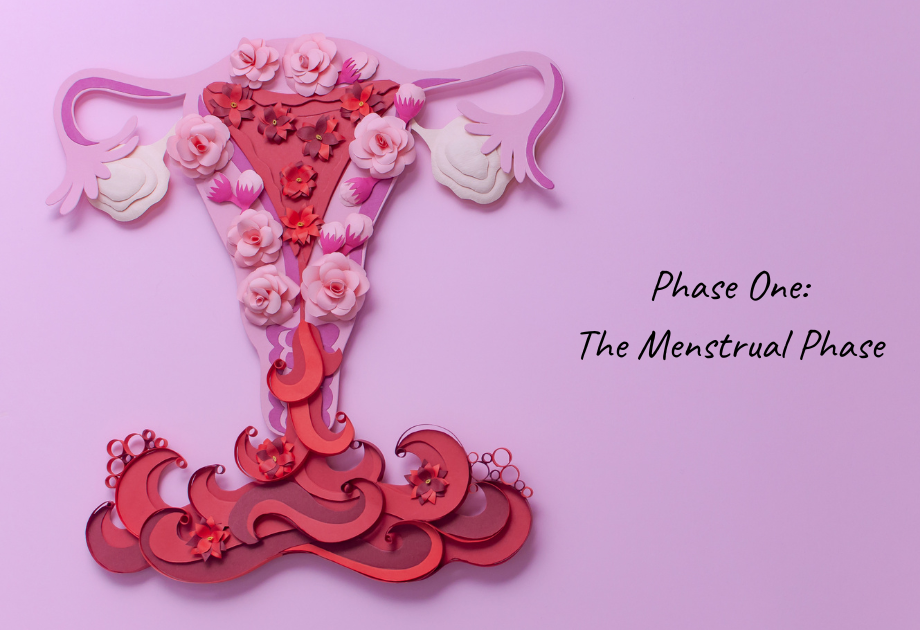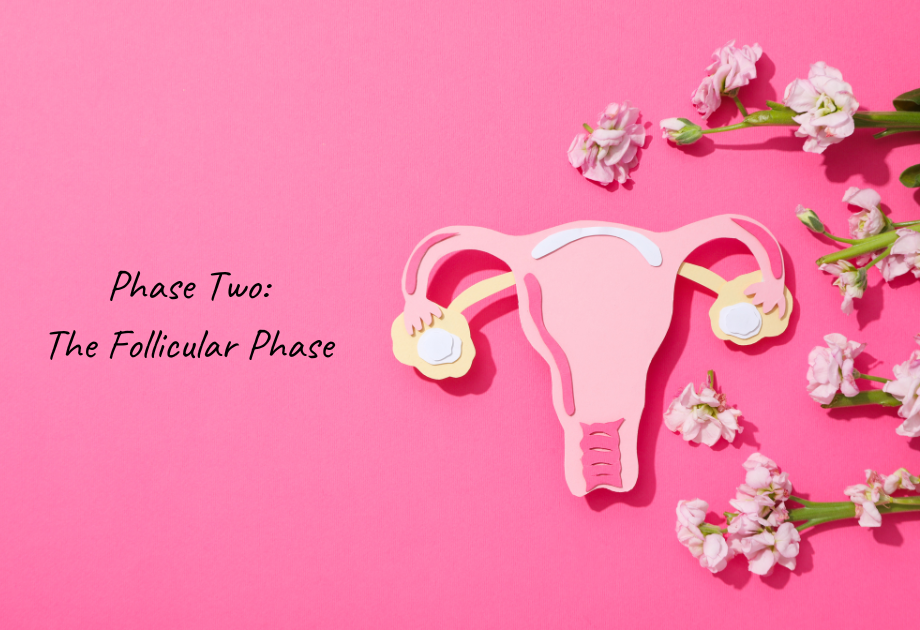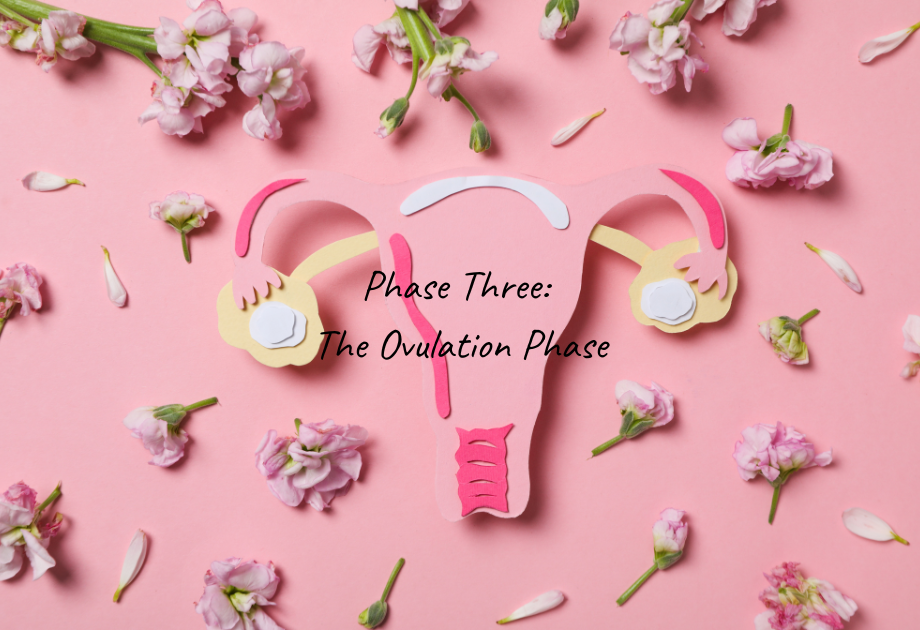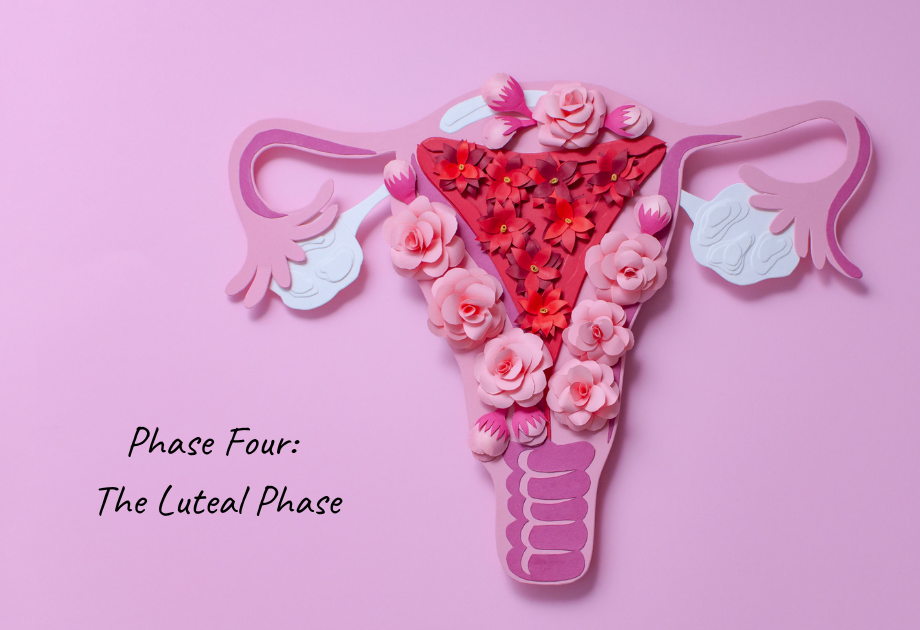Understanding Your Cycle: A Guide to Empowering Your Fertility

The menstrual cycle can mean different things to different people—whether it’s something you track with precision, something that feels like a monthly nuisance, or something you’d prefer to ignore altogether. No matter how you view it, understanding your cycle can empower you to make more informed choices about your reproductive health. Whether you’re trying to conceive or just want to get a better handle on what’s happening, knowing when you’re most fertile and tuning into the signs your body gives you can be invaluable.
In this guide, we’ll break down the four phases of the menstrual cycle to help you understand how each phase impacts fertility. By syncing with your body’s natural rhythm, you’ll feel more confident on your path toward conception.

Phase 1: The Menstrual Phase (AKA "Aunt Flo's Visit")
The menstrual phase marks the start of your cycle, signaling the beginning of your body’s monthly reset. This phase typically lasts between 3-7 days, but it can vary.
The Menstrual Phase: What Happens
During this phase, your body sheds the uterine lining, causing menstrual bleeding. As your period makes its appearance, symptoms like cramping, bloating, and general fatigue can be par for the course. It’s not always the most fun time of the month, but it’s a necessary part of preparing your body for a potential pregnancy.
Hormonal Changes in the Menstrual Phase
During this time, estrogen and progesterone are at their lowest, which can explain why you might feel a little more sluggish than usual. Meanwhile, the follicle-stimulating hormone (FSH) starts to rise, preparing for the next phase.
Fertility and the Menstrual Phase
Fertility is low during this phase—your body is more focused on clearing out the old to make way for the new. While it's not the most fertile time, it's still important to remember that cycle timing can vary, and for some, the window for conception might be a little more unpredictable.

Phase 2: The Follicular Phase (AKA "Prep Time")
The follicular phase begins alongside the menstrual phase and continues after your period ends, typically lasting around 14 days.
The Follicular Phase: What Happens
Follicles in your ovaries start growing, one of which will develop into a mature egg. Meanwhile, the uterine lining thickens, preparing for potential pregnancy.
Hormonal Changes in the Follicular Phase
Estrogen and FSH rise to promote follicle growth, getting everything ready for ovulation.
Fertility and the Follicular Phase
This is where things start heating up in the fertility department. As the body prepares for ovulation, fertility begins to rise. If you’re trying to conceive, this is the time to pay close attention to the signs. Tracking this phase will help you know when you’re nearing your fertile window, so you can maximize your chances of success.

Phase 3: The Ovulation Phase (AKA "The Main Event")
Ovulation is the star of the show—it’s the big moment when your body releases a mature egg. Around day 14 (though this can vary), a mature egg is released, and this is when you’re most fertile.
The Ovulation Phase: What Happens
The egg is released from the ovary and starts its journey down the fallopian tube. The egg is viable for about 12-24 hours—this is your prime time for conception.
Hormonal Changes in the Ovulation Phase
The luteinizing hormone (LH) surges during this phase, triggering ovulation. Estrogen also reaches its peak just before the egg is released, making sure everything is in place for potential conception.
Fertility and the Ovulation Phase
This is it—the best time to get pregnant. Your fertility is at its highest, and the egg is ready to be fertilized. The key here is timing. If you’re tracking your cycle, you’ll want to keep an eye on signs that ovulation is near.
How to Recognize Signs of Ovulation
How do you know ovulation is happening? Some telltale signs include changes in cervical mucus (it becomes stretchy and clear, like egg whites), a slight rise in basal body temperature, and maybe even a little ovulation pain (yes, that’s a thing). Ovulation predictor kits are also a great way to confirm that the egg is on its way.

Phase 4: The Luteal Phase (AKA "The Waiting Game")
After ovulation, the luteal phase begins: This is the final stretch of the cycle, where your body prepares for potential pregnancy.
The Luteal Phase: What Happens
Once ovulation is over, your body kicks into "just in case" mode. The uterine lining continues to thicken in anticipation of a potential pregnancy, creating the ideal environment for a fertilized egg. But if pregnancy doesn’t happen, the lining will eventually break down, leading to the next period.
Hormonal Changes in the Luteal Phase
Progesterone rises to maintain the uterine lining, but if pregnancy doesn’t happen, progesterone and estrogen levels drop, leading to the next period.
Fertility and the Luteal Phase
Fertility is lower in this phase since the egg is no longer viable, but your body is still in the "waiting" period to see if the egg was fertilized. If not, the cycle starts over, and you’ll be back at phase one.
Embrace Your Body’s Natural Rhythm
Understanding your body’s natural rhythm can be a game-changer when it comes to fertility and reproductive health. By becoming more aware of the phases of your cycle, you can learn to sync up with it—whether that’s for conception or simply getting to know your body better.
Tracking the Menstrual Cycle
One of the best ways to get in sync with your body’s natural rhythm is by tracking your cycle. There are plenty of tools out there to help, like period-tracking apps, basal body temperature monitoring, and ovulation predictor kits. Keeping tabs on your cycle helps you identify your fertility window and the signs ovulation is over, which can make a big difference when trying to conceive.
Variations in Cycle Length
No two cycles are exactly the same. Cycle lengths vary, from 21 to 35 days. Slight variations from month to month are totally normal. However, if you notice significant changes in your cycle, it could be a result of stress, hormonal imbalances, or even medical conditions. It’s worth keeping an eye on those fluctuations to make sure everything is running smoothly.
Common Menstrual Issues
Irregular periods, heavy bleeding, or painful cramps can be signs of issues that affect fertility. If these problems persist, it’s best to consult a healthcare provider.
Rely on The Fertility Wellness Institute of Ohio to Empower Your Path to Parenthood
Knowing your cycle inside and out is a powerful tool for your fertility journey. Whether you’re tracking your fertile window or looking for support on your path to parenthood, The Fertility Wellness Institute of Ohio is here to help. Dr. Chin and his team offer expert care to guide you every step of the way.
Schedule an appointment today to learn more about how understanding your cycle can help you achieve your fertility goals.
And don’t forget to follow us on Facebook, Instagram, X, and LinkedIn for more helpful information and tips.
Have a fertility story to share? Share your story here!

